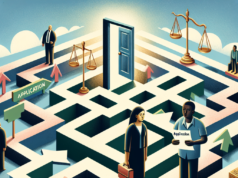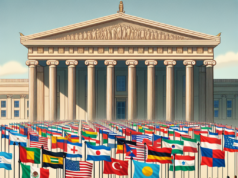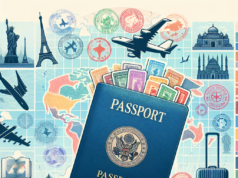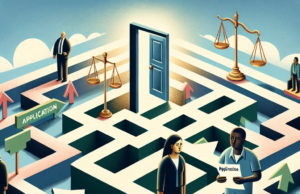
The intertwining crises of human trafficking and immigration have emerged as pressing global issues, drawing attention from governments, NGOs, and international organizations alike. As millions of individuals seek better lives across borders, they often fall prey to traffickers who exploit their vulnerabilities. This article delves into the complex relationship between human trafficking and immigration, highlighting the statistics, vulnerable populations, the role of organized crime, legal challenges, and collaborative strategies aimed at addressing these intertwined crises.
Understanding the Interconnection Between Human Trafficking and Immigration Issues
Human trafficking and immigration are inextricably linked, as the latter often creates conditions ripe for exploitation. Individuals fleeing violence, poverty, or persecution may resort to irregular migration routes, making them susceptible to traffickers who promise safety and opportunity. The desperation of these migrants can lead them to trust unscrupulous agents who may ultimately exploit them for labor or sexual purposes. This nexus complicates the immigration debate, as policymakers grapple with the need for humane immigration policies while simultaneously addressing the urgent need to combat human trafficking.
The Global Landscape: Statistics and Trends in Human Trafficking and Migration
According to the United Nations Office on Drugs and Crime (UNODC), an estimated 25 million people are victims of human trafficking worldwide, with a significant portion being migrants. The International Organization for Migration (IOM) reports that global migration has reached unprecedented levels, with over 281 million people living outside their country of birth. This surge in migration, coupled with the rise of conflicts and climate change, has created a fertile ground for traffickers. Recent trends indicate that traffickers are increasingly using digital platforms to recruit victims, making it more challenging for authorities to detect and prevent these crimes.
Vulnerable Populations: Who Are the Targets of Human Trafficking?
Vulnerable populations, including women, children, and undocumented migrants, are disproportionately affected by human trafficking. Women and girls are often targeted for sexual exploitation, while men may be trafficked for forced labor in industries such as agriculture, construction, and fishing. Children are particularly at risk, with many being exploited for child labor, sexual exploitation, or forced recruitment into armed groups. Factors such as poverty, lack of education, and social instability further exacerbate their vulnerability, making it imperative for governments and organizations to implement targeted interventions to protect these at-risk groups.
The Role of Organized Crime in Exploiting Immigration Vulnerabilities
Organized crime syndicates play a significant role in the trafficking of individuals, capitalizing on the vulnerabilities created by immigration crises. These groups often operate transnationally, using sophisticated networks to smuggle migrants and exploit them for profit. The interplay between human trafficking and smuggling is particularly concerning, as many migrants who initially seek safe passage may find themselves trapped in exploitative situations. Law enforcement agencies face significant challenges in dismantling these networks, as traffickers often employ tactics such as bribery, intimidation, and violence to maintain control over their victims and evade capture.
Legal Frameworks: Challenges in Combating Human Trafficking and Protecting Immigrants
Despite the existence of international legal frameworks aimed at combating human trafficking, such as the Palermo Protocol, significant challenges remain in their implementation. Many countries lack the necessary resources, training, and political will to effectively enforce anti-trafficking laws. Additionally, the criminalization of irregular migration can deter victims from seeking help, as they fear deportation or legal repercussions. This creates a paradox where the very individuals who need protection are often treated as criminals, further complicating efforts to address both human trafficking and immigration issues.
Strategies for Prevention: Collaborative Efforts to Address the Dual Crisis
Addressing the dual crises of human trafficking and immigration requires a multifaceted approach that includes collaboration among governments, NGOs, and international organizations. Prevention strategies should focus on raising awareness about the risks of trafficking, providing education and economic opportunities for vulnerable populations, and strengthening legal protections for migrants. Additionally, enhancing law enforcement capabilities to combat organized crime and improving victim support services are crucial steps in breaking the cycle of exploitation. By fostering partnerships and sharing best practices, stakeholders can create a more comprehensive response to these interconnected challenges.
The dark nexus between human trafficking and immigration presents a formidable challenge that demands urgent attention and action. As the global landscape continues to evolve, it is essential for policymakers, law enforcement, and civil society to work together to dismantle the systems that enable exploitation. By understanding the complexities of this issue and implementing effective strategies, we can protect vulnerable populations and ensure that the pursuit of a better life does not come at the cost of human dignity and freedom.


























